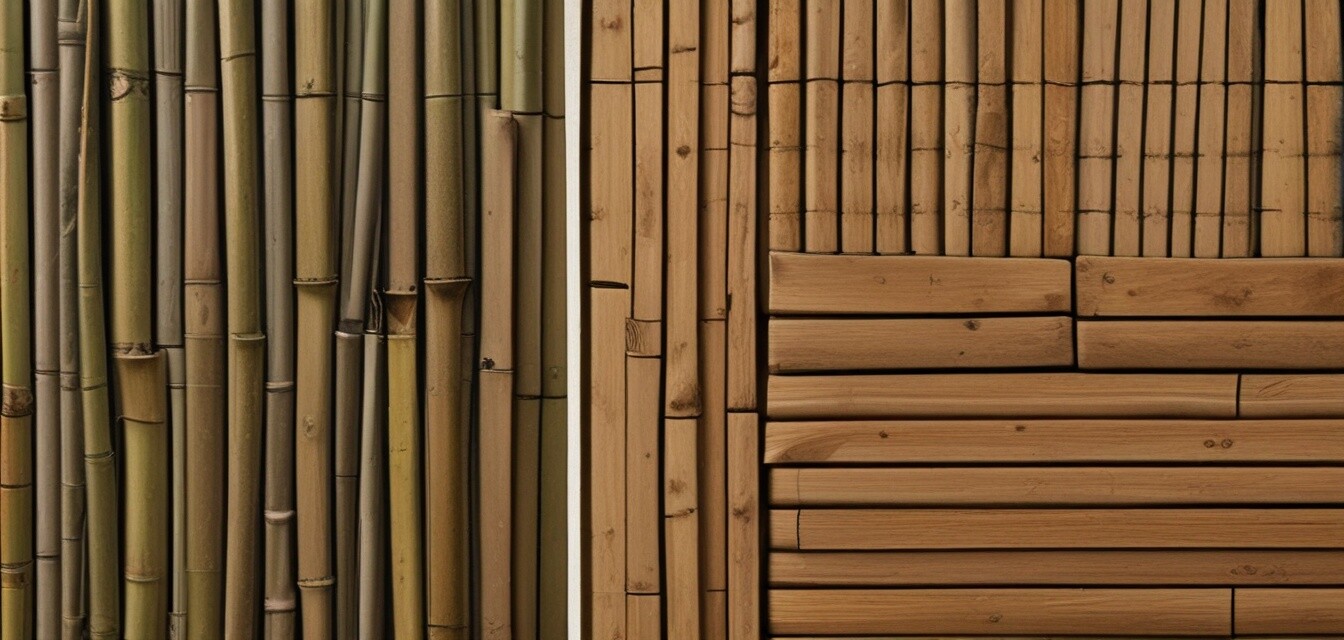
The benefits of using bamboo vs. traditional wood
Key Takeaways
- Bamboo is one of the most sustainable materials available, growing rapidly and requiring less water.
- Traditional wood comes from a range of species, offering diverse aesthetics and durability.
- Both materials have unique characteristics that make them suitable for different furniture styles.
- The choice between bamboo and traditional wood depends on your project requirements, environmental implications, and personal aesthetic.
When it comes to selecting materials for furniture, designers and makers often find themselves weighing the options between bamboo and traditional wood. Each material offers its own unique benefits, textures, and aesthetics. This article explores the sustainability, durability, and design considerations of bamboo versus traditional wood, helping you make an informed decision for your next project.
Sustainability Comparison
Sustainability is key when choosing materials for woodworking projects. Let's take a closer look at how bamboo and traditional wood stack up in this area.
| Material | Growth Rate | Water Requirements | Carbon Footprint |
|---|---|---|---|
| Bamboo | Quickly grows, up to 91 cm (35 in) per day | Requires less water compared to traditional wood | Lower overall carbon footprint due to fast regeneration |
| Traditional Wood | Slow growth, varies by species | Higher water usage during growth and processing | Higher carbon footprint, especially with deforestation |
Bamboo is renowned for its rapid growth and resilience. It can be harvested after only three to five years, making it a renewable resource. In contrast, traditional wood typically requires decades to mature, making it less sustainable when sourcing from newly logged forests.
Durability and Maintenance
Both bamboo and traditional wood offer different levels of durability. Here we break down the main characteristics of each material.
| Material | Hardness | Resistance to Moisture | Maintenance Requirements |
|---|---|---|---|
| Bamboo | Highly durable, softer than some traditional woods | Good moisture resistance with proper treatment | Minimal maintenance, oil treatments recommended |
| Traditional Wood | Varies by species; hardwoods like oak are very durable | Vulnerable to moisture unless treated | Regular maintenance needed, including re-oiling |
While bamboo provides impressive durability, it's essential to know that not all bamboo products have the same hardness. Some can be softer than hardwoods, potentially making them less suited for high-impact surfaces. Traditional hardwoods like oak or maple, on the other hand, are incredibly durable but may require more frequent maintenance to sustain their appearance.
Design Aesthetics
The visual appeal of bamboo and traditional wood can significantly impact your design choices. Let's explore their unique features:
- Bamboo: Features a sleek, linear aesthetic with a light color that can brighten up any space. The texture is often smooth and can be finished to enhance its natural sheen.
- Traditional Wood: Comes in a wide variety of colors, grains, and textures. Each species offers a unique story and aesthetic, providing versatile options for different design styles, from rustic to modern.
Final Thoughts: Which should you choose?
The choice between bamboo and traditional wood ultimately depends on the specific needs of your projects. Consider factors such as sustainability, durability, and the specific aesthetic you aim to achieve.
Pros of Bamboo
- Fast-growing and renewable resource
- Lightweight yet durable
- Eco-friendly with a lower carbon footprint
Cons of Bamboo
- Can be less durable than some hardwoods
- Limited options for coloration
Pros of Traditional Wood
- Wide range of hardness and durability
- Offers diverse aesthetics
- Time-tested material with historic value
Cons of Traditional Wood
- Longer growth periods affecting sustainability
- Higher maintenance compared to bamboo
Explore More
For those interested in wood products, consider checking out our category on wood finishing products for ways to maintain your items or visit our home décor accents section for beautiful designs. If you're looking for woodworking advice, explore our buying guides to make informed purchasing decisions. There's a wealth of information available about how to care for your new wood items on our sustainable practices page.
Conclusion
Bamboo and traditional wood each have inherent strengths and weaknesses for furniture making. Understanding these differences allows you to select the right material for your needs while maintaining awareness of sustainability in wood selection. With the right care, both options will enhance your home with natural beauty for years to come.